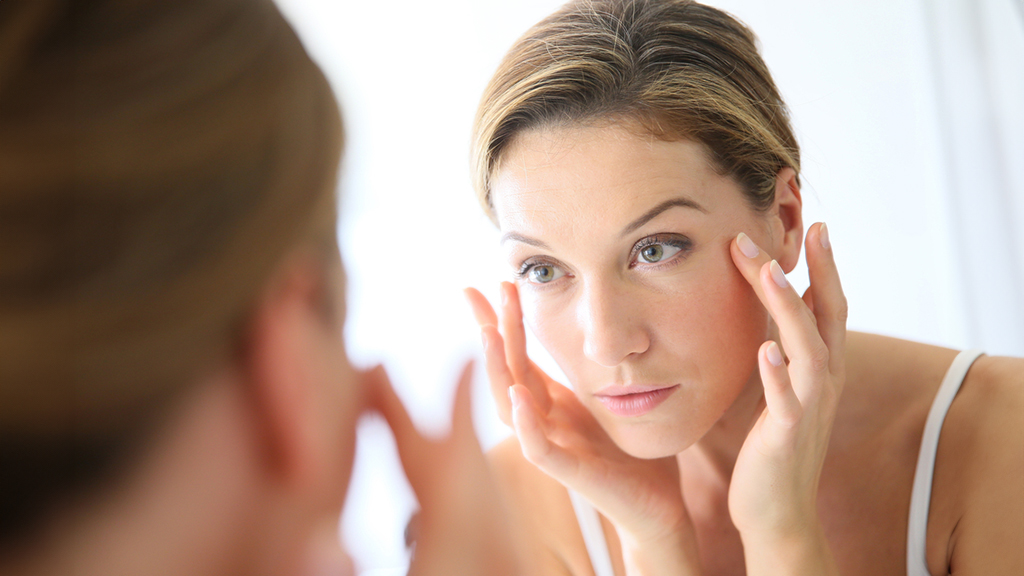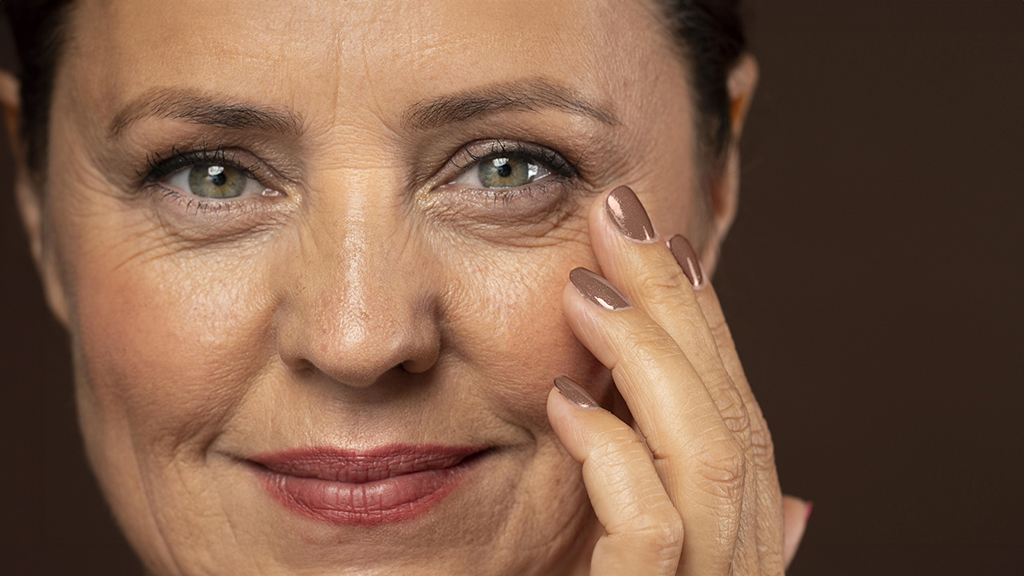Facelift / Neck Lift
As we age, our skin naturally loses some of its elasticity and our facial muscles weaken. Sun exposure can accelerate this process and further contribute to an aged appearance by diminishing the overall quality of the skin. As a result, the skin hangs differently, forming folds and creases. Facelift, also known as rhytidectomy, is one of the most commonly requested procedures by both men and women who want to look as young as they feel.
Facelift is very effective in reversing the signs of ageing, it has moved on considerably from the taught, ‘stretched’ look, and most modern facelifts now carefully manipulate the deeper facial tissues and re-drape the skin to produce a fresher, natural, more youthful appearance.
Dr Allen Rezai utilises the very latest techniques in surgery (facelifts; chin, cheek, liposuction to the neck, brow lifts and fat grafting) and non-surgical techniques (fillers, muscle relaxing injections and Platelet Rich Plasma skin rejuvenation) to combat the problem of the ageing face. Facial surgeons generally divide the face into thirds, roughly: brow, mid-face, and lower face and neck. Each must be assessed both separately and collectively for the best option to be chosen and best results to be achieved.
Reasons for having facelift surgery

The best candidates for facelift are generally considered to be those individuals whose skin quality is still relatively good. Most patients are between forty and seventy years of age, although older patients may also benefit. Indications for having this surgery include:
- Visible jowls – no longer having a smooth firm jaw line.
- Deep lines in the corner of the mouth, which can often give a “sad” look.
- Loose skin and wrinkling to neck area.
- Substantial weight loss in later life can give the effect of ageing – older skin has less elasticity than younger skin and without the fat, will become saggy and wrinkly.
- To look more youthful and attractive
Over-exposure to the sun can make these symptoms even worse and further contributes to an aged appearance by diminishing the overall quality of the skin. Also weight loss in later life can create a more aged appearance, because older skin has less elasticity than younger and, without the fat, it will become saggy and wrinkled.
Types of Facelift
A variety of different types of facelifts and facelift techniques are performed today. Some of the more common types are described here. Dr Allen Rezai will discuss with you which type of facelift is right for you, or which combination of techniques will give you an optimal result.
Traditional (SMAS) Facelift
Traditional facelift addresses the lower face and neck. During the procedure, incisions are made in the hairline, starting above the ear, continuing behind the ear, curving around the ear and ending in the hairline behind the ear onto the lower scalp. Once the incision has been made the surgeon will carefully separate the skin from the underlying tissue, reposition excess fat and use sutures to lift and reposition the muscle layer (“SMAS” – superficial musculo-aponeurotic system) toward the ears. This allows the structures in the lower face and neck, to be sutured to bone higher on the face, hence tightening the sling running around the lower face and chin/neck. This muscle tightening is thought to provide longevity to the surgical result. The skin will then be lifted and sutured into place along the original incision, the excess skin is removed and the incisions are closed.
The Mini-Lift or Skin Only Facelift
A mini-lift addresses the lower face and neck. This is the most basic of facelifts, and involves little more than a skin tuck. The surgeon first makes the traditional facelift incision, as explained above. He then dissects the skin from the underlying fat and muscle, stretches it back, trims excess skin, and closes the incisions. Due to the skin’s ability to stretch out over time, this facelift is considered to be less long-lasting than facelifts employing muscle tightening. Occasionally, drains may be used. The Mini-Lift has little, if any, effect on folds running between the nose and mouth (naso-labial folds).
The Deep Plane facelift
The deep-plane facelift is modification of the traditional facelift. During this type of facelift, the surgeon will dissect to a deeper plane of the patient’s face before lifting and repositioning the muscle. Additionally, the surgeon will separate certain muscle layers off of deeper muscles and or other facial structures. Some surgeons believe it offers certain advantages to a traditional facelift including a more natural result and improved rejuvenation of droopy skin. However, this technique has a higher risk of facial nerve injury and many surgeons dispute that it offers a significant advantage to the traditional facelift.
Neck lift
Neck lift surgery targets a drooping or sagging neck area and involves the removal of excess skin and fatty tissue, leaving the skin around the area of the neck and jaw smoother and more defined. Incisions are typically shorter than those made during a traditional facelift and will normally be placed only at the earlobe and behind the ear. Vertical bands and lines can be eliminated using platysmaplasty; a procedure which involves making small incisions under the chin or behind the ears to tighten the muscles of the neck. Excess fat from the neck area is removed by using liposuction or similar techniques. In patients with excellent skin elasticity, a neck lift may be performed alone. More commonly, when skin elasticity is fair or poor, a facelift is performed as well, to remove excess skin that would otherwise remain.
Alternatively, neck lift surgery, rather than a full facelift, may be sufficient to achieve the results you desire. As with any other cosmetic procedure, your expectations should be realistic. The results of neck lift surgery will depend on the elasticity of your skin and to what degree it has been affected by sun damage.
What to consider at this stage
It is important that, before you see your surgeon, you consider what you are trying to achieve from your surgery. Lifestyle choices also need to be considered and certain steps must be taken to reduce the likelihood of later complications. If you intend losing weight, it is best to do so before your facelift. Smokers are advised to stop smoking for at least six weeks prior to surgery in order to help healing and reduce the risk of infection (smoking, amongst other things, reduces the blood supply to the thin skin flaps created by your surgeon).
Consultation, Medical History and Physical Examination
The importance of the initial consultation cannot be overemphasised. At your consultation, Dr Allen Rezai will fully discuss every aspect of your aesthetic goals and address any concerns you may have; he places the utmost importance on providing his patients with all the information they need to make fully informed decisions, ensuring each one arrives at the outcome that’s best for them.
Your medical history will be discussed with you. It is important that you answer all questions as honestly and accurately as possible as failure to do so can have significant clinical repercussions. Please feel free to bring along any medical records that may be pertinent to the discussion. Also, it is important to alert Dr Rezai to any allergies or health issues you may have, along with a record of what medicines or vitamins you are taking and whether or not you smoke.
Routine blood tests are required for all patients, about 2 weeks prior to the surgery. An ECG is also required for patients over 50 years of age.
According to Dr Rezai, the majority of patients who request facial surgery will have been thinking about this path for a considerable amount of time. They will have had long-term concerns about their appearance and understand better than anybody else just how important the results of the surgery will be. For this reason he and his team will spend considerable time with their patients in order to obtain answers to critical questions such as exactly what they desire as a result of surgery; what actually concerns them is indeed the real problem; and whether or not other possible treatments might be more appropriate or beneficial. If all such factors point to facelift surgery as being the best solution, then a bespoke surgical plan will be developed for you. Dr Rezai will explain in detail the treatment options available, the techniques that would be used, and any potential risks and complications you need to be made aware of. Informational brochures and fact sheets explaining each procedure will be provided for your review. Dr Rezai will use his expertise and experience to guide you towards the best option, taking into account your anatomy, aesthetic goals and personal circumstances.
The procedure for Facelift surgery
The operation may be performed under local anaesthetic with sedation. However, the majority of patients and surgeons prefer the use of general anaesthetic.
- Surgical drains are usually deployed and removed the following day.
- The face may also be dressed with a bandage, which is normally removed the following day.
- The operation may take two or more hours, especially if additional procedures are performed.
- Most patients stay in hospital for one or two nights.
- If your work is not physically demanding, expect to return to work within two weeks.
- Expect to be back to normal physical exercise within three to four weeks.
Following the operation
As with all surgery, you must expect to feel sore and bruised after the operation. Most surgeons apply a bandage to the face for two days to reduce swelling. Sutures are removed after one week to ten days. You may also be asked to keep your head elevated for a few days to help the swelling go down. Initially your face will feel puffy and somewhat stiff. This is entirely normal and a natural part of the healing process.
At Elite Plastic & Cosmetic Surgery Group, we will provide you with detailed post-surgery instructions to expedite your recovery. Should you develop any doubts or concerns following your treatment, however, they would encourage you to contact us straight away.
Other Procedures Combined with Facelift
A further benefit of facelift surgery is that, provided a patient has the appropriate indications, several other related procedures can be performed at the same time.
These are:
- Facial fat grafting
- Dermal Fillers
- PRP Therapy
- Eyelid Surgery
- Neck liposuction
- Chin Implant Surgery
- Brow Lift
Liposuction is often performed during facelift or necklift to remove excess fat from the neck. When performing liposuction, the surgeon will make a tiny incision, usually under the chin. He will then use a small cannula attached to a suction device to carefully remove the fat to allow optimal definition of the chin and neck regions.
PRP Therapy is used to improve the skin elasticity and promote faster healing. Fat transfer and dermal fillers, address hollowed areas of the face, commonly, under the eyes, around the mouth and under the cheek bones. It is thus an additional aid in restoring the face to its natural, youthful appearance. It can also be used in correcting asymmetrical areas of the face, sunken cheeks and eyelids, and thinning lips.
Risks & Complications
Cosmetic surgery is amongst the safest of medical procedures. However, patients must understand and accept that no surgical procedure is totally without risk. For further information concerning the risks and complications associated with Facelift, please refer to Risks and Complications of Facelift.
At your Consultation, Your surgeon will discuss the risks with you.
How long will the results of your facelift surgery last?
A facelift will turn the clock back, but it will not make time stand still. You will always look younger than you otherwise would – with friends and colleagues typically remarking that you look “well” – but in the following years your face will continue to age. There are many non-surgical procedures which will help to prolong the result of a facelift. For further information please visit the Non-Surgical section of our website.
For details about procedures and treatments or for a consultation, advice and prices from our Dubai clinic please call +971 4 431 2396 or use our online form.



